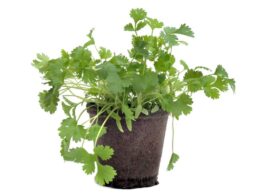What Is the Dumb Cane Plant? Name Etymology
The dumb cane plant, also known as Dieffenbachia, is a tropical plant native to Central and South America. The name “dumb cane” comes from the fact that the plant contains a toxic sap that can cause temporary paralysis of the vocal cords, making it difficult or even impossible to speak. Dieffenbachia is a popular houseplant because it is relatively easy to care for and can thrive in low-light conditions.
The poisonous sap can cause swelling and burning of the lips, tongue, and throat. In severe cases, it can even lead to difficulty breathing. Symptoms typically resolve within 24 hours, but it is still best to avoid contact with the sap if possible.
Dumb Cane Plant Care
Water your dumb cane plant once a week, keeping the soil slightly humid at all times. The best way to water your plant is to use lukewarm water and soak the roots thoroughly. Avoid getting the leaves wet as this can lead to fungal infections, but you can mist your green pet in the winter in order to prevent the leaves from drying out.
Fertilizing
Fertilize your dumb cane plant once a month during the summer with a balanced, all-purpose fertilizer. Be sure to follow the directions on the package, as too much fertilizer can damage the roots. Read on for more dumb cane plant care tips!
Pests and Diseases
The dumb cane plant is relatively resistant to pests and diseases, but there are a few that you should be aware of. These include mealybugs, spider mites, and root rot.
Mealybugs are small, white insects that feed on plant sap. They can be controlled with regular applications of insecticidal soap or neem oil. Spider mites are tiny spiders that spin webs on the undersides of leaves. They can be controlled with regular applications of insecticidal soap or horticultural oil.
Root Rot
Root rot is a fungal disease that can occur if the roots are allowed to sit in water for too long. To prevent this, make sure you water your plant thoroughly and then allow the soil to drain before watering again.
Does the Dieffenbachia Houseplant Flower?
Dieffenbachia, also known as dumb cane, is a popular houseplant that is prized for its large, tropical leaves. While Dieffenbachia does produce small flowers, they are generally not considered to be particularly showy. The flowers are typically white or green and grow in clusters along the stem. However, it is the Dieffenbachia‘s foliage that is most commonly admired. The leaves are typically variegated with shades of green, yellow, and white, and they can reach up to two feet in length.
Light Requirements
Dumb cane plant care is relatively easy, although they do have some specific light requirements. In general, dumb canes prefer bright, indirect light. If the light is too intense, the leaves will begin to fade or develop brown spots. Conversely, if the light is too low, the plant will become leggy and produce fewer leaves.
Therefore, it is important to find a balance that meets the needs of your plant. Fortunately, there are a number of ways to provide the right amount of light for a dumb cane, including placing it near an east- or west-facing window.
Potting and Repotting Dieffenbachia
Dieffenbachia, also known as dumb cane, is a tropical plant that is popular for its large, glossy leaves. The plant is native to Central and South America, where it grows in moist, shady areas. The plant can become pot-bound quickly and will need to be repotted every year or two in springtime. When repotting Dieffenbachia, choose a pot twice as large as the existing one. Be sure to use a well-draining potting mix and water the plant thoroughly after repotting.
Propagating Dieffenbachia
The dumb cane, is a popular houseplant that is prized for its large, glossy leaves. The following tips can help you successfully propagate dumb cane:
- Start with a healthy mother plant. Choose a stem that is free of disease or pests, and cut it just below a node (the point where leaves emerge from the stem).
- Remove the lower leaves from the stem. This will help prevent rot and allow the stem to form new roots more easily.
- Dip the cut end of the stem in rooting hormone. This will encourage root formation.
- Place the stem in a pot filled with moistened potting mix. Be sure to use a well-draining mix, as dumb cane is susceptible to root rot.
- Place the pot in a warm, humid location. A propagation chamber or covered terrarium is ideal.
- Keep the soil moist but not soggy, and provide bright, indirect light.
The Perfect Soil for Dumb Cane Plants
When potting a dumb cane, it is important to use a well-draining potting mix. This will help prevent the plant from developing root rot, which can be a common problem for dumb canes. A good potting mix for dumb canes should contain a mixture of peat moss, perlite, and vermiculite. You can also add some organic matter, such as compost or manure, to help improve the drainage and nutrient content of the soil. Be sure to water the plant thoroughly after potting and keep the soil moist but not soggy.
Dieffenbachia Plants. Recap
If you follow these simple dumb cane plant care tips, then you should have no problem keeping your plant healthy and happy. Dieffenbachia is a beautiful plant that can add a touch of tropical flair to any home. So if you are looking for an easy-to-care-for houseplant, then this is the one for you!
Additional tip: Dieffenbachia juice is toxic. Thus, always wash your hands after dumb cane plant care and use gloves!
Do you have any questions about dumb cane plant care? Leave a comment below, and we will be happy to help! And be sure to check out our other blog posts on houseplants!



















